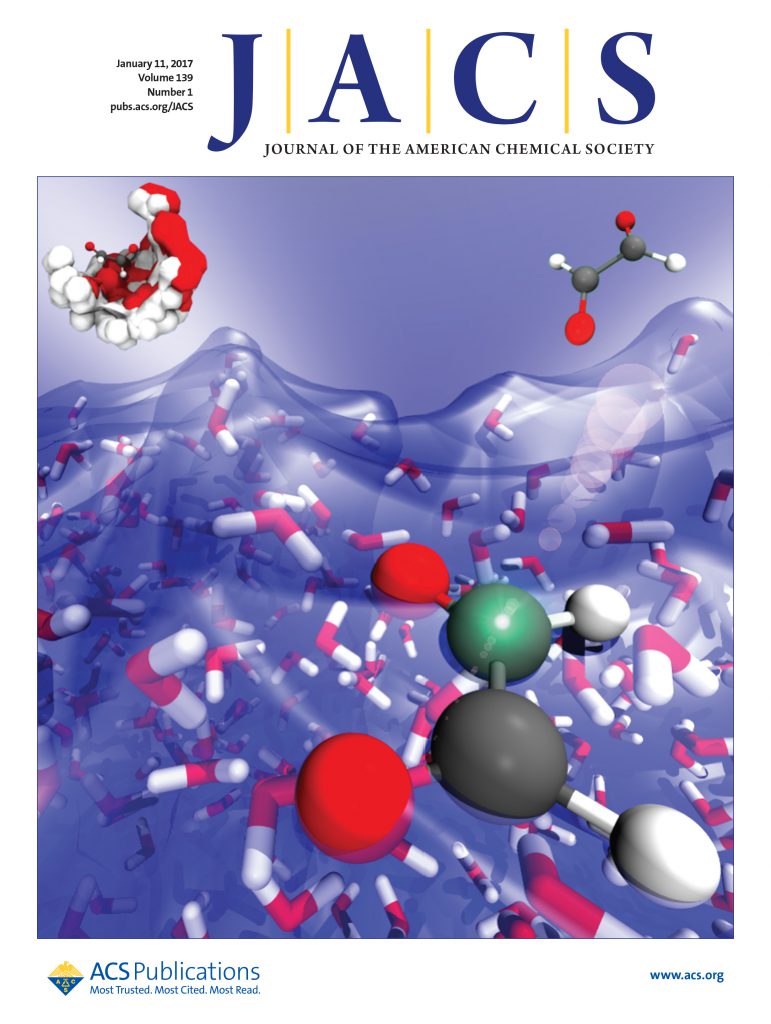电诱导还原性和脱醛性烯醛偶联反应
IF 14.4
1区 化学
Q1 CHEMISTRY, MULTIDISCIPLINARY
引用次数: 0
摘要
烯烃原料与醛的直接偶联是生成新的、结构多样的 C(sp3)杂化醇的一种便捷方法,这些醇可以被加工成特殊的结构。尽管碳-碳 π 键和醛的断开策略非常丰富,但由于当代方法往往受到底物或官能团耐受性以及在复杂分子环境中的兼容性的限制,因此实现碳-碳 π 键和醛的直接偶联的现有断开策略仍然具有挑战性。在此,我们报告了一种通过电化学诱导还原活化 C-C π 键实现简单烯烃、杂环烯和未活化脂肪族醛之间偶联的方法。这种方法的基石是发现了快速交变极性(rAP)电解法,可直接获取共轭烯类和杂环化合物衍生的高活性自由基阴离子中间体。我们开发的无催化剂方案能够直接获得结构多样的新型 C(sp3)杂化醇产品。这是通过对共轭烯和杂环化合物中的 C2-C3 π 键进行前所未有的还原脱芳香官能化,从而实现受控还原。实验机理研究表明,C-C π-键在醛上的还原是一种动力学偏向的单电子还原。应用 rAP 可以化学选择性地生成烯烃基阴离子中间体,并避免不希望的饱和过度还原。总之,该技术为烯烃和杂环原料与脂肪醛的还原偶联提供了一种多功能方法,可直接获得多种富含 C(sp3)的含氧支架。本文章由计算机程序翻译,如有差异,请以英文原文为准。

Electroinduced Reductive and Dearomative Alkene-Aldehyde Coupling
The direct coupling of alkene feedstocks with aldehydes represents an expedient approach to the generation of new and structurally diverse C(sp3)-hybridized alcohols that are primed for elaboration into privileged architectures. Despite their abundance, current disconnection strategies enabling the direct coupling of carbon–carbon π-bonds and aldehydes remain challenging because contemporary methods are often limited by substrate or functional group tolerance and compatibility in complex molecular environments. Here, we report a coupling between simple alkenes, heteroarenes and unactivated aliphatic aldehydes via an electrochemically induced reductive activation of C–C π-bonds. The cornerstone of this approach is the discovery of rapid alternating polarity (rAP) electrolysis to access and direct highly reactive radical anion intermediates derived from conjugated alkenes and heterocyclic compounds. Our developed catalyst-free protocol enables direct access to new and structurally diverse C(sp3)-hybridized alcohol products. This is achieved by the controlled reduction of conjugated alkenes and the C2–C3 π-bond in heteroarenes via an unprecedented reductive dearomative functionalization for heterocyclic compounds. Experimental mechanistic studies demonstrate a kinetically biased single-electron reduction of C–C π-bonds over aldehydes. Application of rAP enables chemoselective generation of olefinic radical anion intermediates and avoids undesired saturative overreduction. Overall, this technology provides a versatile approach to the reductive coupling of olefin and heterocycle feedstocks with aliphatic aldehydes, offering straightforward access to diverse C(sp3)-rich oxygenated scaffolds.
求助全文
通过发布文献求助,成功后即可免费获取论文全文。
去求助
来源期刊
CiteScore
24.40
自引率
6.00%
发文量
2398
审稿时长
1.6 months
期刊介绍:
The flagship journal of the American Chemical Society, known as the Journal of the American Chemical Society (JACS), has been a prestigious publication since its establishment in 1879. It holds a preeminent position in the field of chemistry and related interdisciplinary sciences. JACS is committed to disseminating cutting-edge research papers, covering a wide range of topics, and encompasses approximately 19,000 pages of Articles, Communications, and Perspectives annually. With a weekly publication frequency, JACS plays a vital role in advancing the field of chemistry by providing essential research.

 求助内容:
求助内容: 应助结果提醒方式:
应助结果提醒方式:


